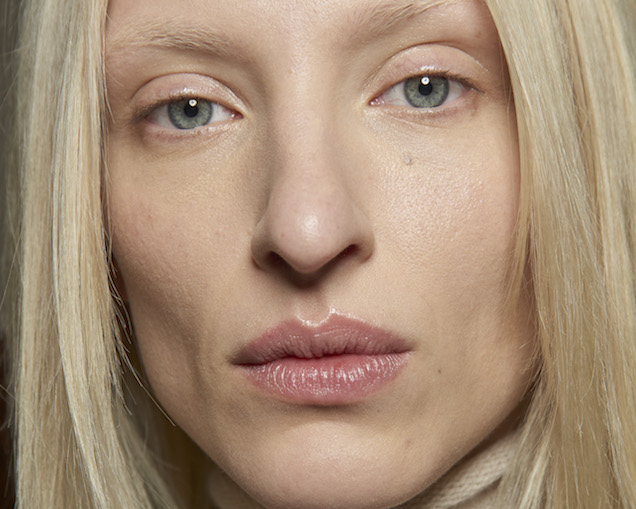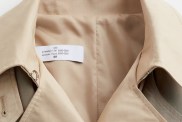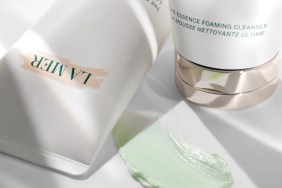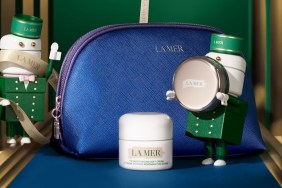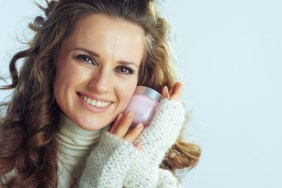We don’t need to tell you that anything other than smooth, hydrated, glowing skin is a nuisance. No matter if the issue is acne, rosacea, eczema, seborrheic dermatitis or some other form of flaking or inflammation, it’s frustrating, uncomfortable and can often impact self-esteem in serious ways. While the solution isn’t always as easy as changing a skin care regimen, examining the ingredients on the back of your favorite products is a good place to start.
“While everyone has individualized needs based on their skin and lifestyle factors, like diet and stress, our most versatile tip for eliminating rashes is to avoid key inflammatory ingredients, many of which are commonly found in ‘calming’ and ‘clarifying’ skin solutions,” says Barbara Close, esthetician and founder of Naturopathica.
Here’s are the ingredients to avoid if you’re rash-prone.
Chemical Sunscreen
If you’re rash prone, forgoing chemical sunscreens (versus mineral) in sun protection products, BB creams and tinted moisturizers could be the simplest step in avoiding contact dermatitis (aka rashes). “Chemical sunscreen ingredients like avobenzone and octinoxate are absorbed by the body and can cause breakouts and irritation in a lot of patients,” says Graceanne Svendsen, celebrity aesthetician at Shafer Plastic Surgery and Laser Center. “Mineral-based sunblocks using zinc and titanium dioxide should not cause rashes; in fact, zinc is a known healing ingredient, especially for acne patients.”
Hydroquinone
It’s disturbing to know that many ingredients that have been taken off the shelves in Canada and Europe are still widely used in the U.S., but that is most certainly the case. Svendsen singles out hydroquinone as one such ingredient. “It has a reputation not only for being a carcinogen, but also an irritant. Sensitive-skin patients can sometimes have reactions to this lightening agent. Though most patients do just fine using it, it’s one of the first questions I ask when evaluating skin disturbances.”
Silicone
Silicone sounds harmless because it’s so common in serums, moisturizers, humectants, primers, foundations and just about everything else, but Svendsen says it’s usually high on her list of ingredients that can compound the effects of a rash. “Since silicone is inert and only creates a seal on the skin, it’s not normally the cause of a rash, but it traps the rash-y, inflamed skin without giving it a chance to breathe or exfoliate off to heal.” Bottom line: Too much silicone on sensitive rashes can exacerbate the problem and not resolve it. Svendsen also underlines that silicone often hides under other names like dimethicone or methicone.
Bleaching Agents
Those breakouts around your mouth might be more related to your oral care routine than your skin care routine. “Oftentimes what looks like perioral acne to patients is irritated skin from bleaching products in toothpaste,” says Svendsen. “Peroxide and other bleaching agents (even fluoride!) can irritate the skin around the mouth and cause rashes.” If this is the case, she suggests using a gentler option like Tom’s of Maine or another natural toothpaste product.
Neomycin and Bacitracin
Commonly found in antibacterial ointments, Hal Weitzbuch, M.D., Calabasas Dermatology Center Medical Director, says that neomycin and bacitracin have some of the highest true allergy incidences of any topical product.
Certain Oils
Natural products with oils might be just what your acne-prone skin needs, but you have to be strategic about your choice. “The best oils for acne will keep your skin hydrated and supple and will not clog your pores,” says Michele Griffiths, founder of Supernatural Body USA. “The ones to avoid are apricot kernel oil, which is mildly comedogenic and can block pores, coconut oil (while it’s moisturizing and has antioxidants, it can clog pores) as well as wheat germ, olive, avocado and palm oil and petroleum-based oils like mineral oil.”
Close adds that the heavy molecules in these oils clog follicles and lead to an overgrowth of bacteria, which manifests as breakouts and inflammation on the surface of the skin.” Instead, opt for known hydrators like hyaluronic acid to replenish moisture. Lock in hydration with lightweight oils like borage seed oil or andiroba seed oil, which won’t clog pores and can help balance the skin’s natural oil production.
Harsh Surfactants like Sulfates, Octoxynols and Cocamidopropyl Betaine
All of these ingredients can all be irritating to the skin and have been known to exacerbate breakouts and rashes. “Sulfates also strip the skin of its natural oils and healthy bacteria, which make up the lipid barrier and skin microbiome — the skin’s first line of defense against irritation,” says Close. It can be hard to avoid surfactants because they pop up in everything from shampoo to perfume, so Close suggests opting for a coconut-derived surfactant like coco-glucoside, or cocamidopropylamine oxide. “These will gently clarify without stripping the skin.”
Nickel
According to Svendsen, this is one of the most overlooked metals when it comes to diagnosing the root of rash-prone skin. “A lot of people are very allergic to nickel to the point of it causing bleeding in earlobes and mysterious reactions locally located on the point of contact. Even gold jewelry up to 24k gold has nickel in it. Most patients react far better to platinum.” Antiperspirants, mascara and eyeshadow are some cosmetics that can contain nickel.
Salicylic and Lactic Acid
Don’t get us wrong: Salicylic and lactic acid are some of the best products for treating and preventing breakouts and delivering a healthy glow, but things can go wrong when they’re over-used. “Beware of over-exfoliating and over-drying by moderating your use of these acids,” says Close. “Limit yourself to a two percent salicylic acid treatment for spot treating breakouts and stop when your skin starts to feel parched and stripped. Limit lactic acid use to once or twice per week. Over-use can lead oily skin to overcompensate with oil production and can ultimately lead to more breakouts.”
Fragrances, Dyes and Preservatives
One of the most common culprits for rashes is fragrance. If you’re rash-prone, Dr. Weitzbuch suggests avoiding all of them, along with dyes and the preservatives formaldehyde and paraben, which are very commonly found in a long list of beauty products including makeup, moisturizers, shampoos, mouthwash, nail polish and soap.
[ Next: Who Knew? Fermented Ingredients Also Do Amazing Things for Your Skin Care ]
